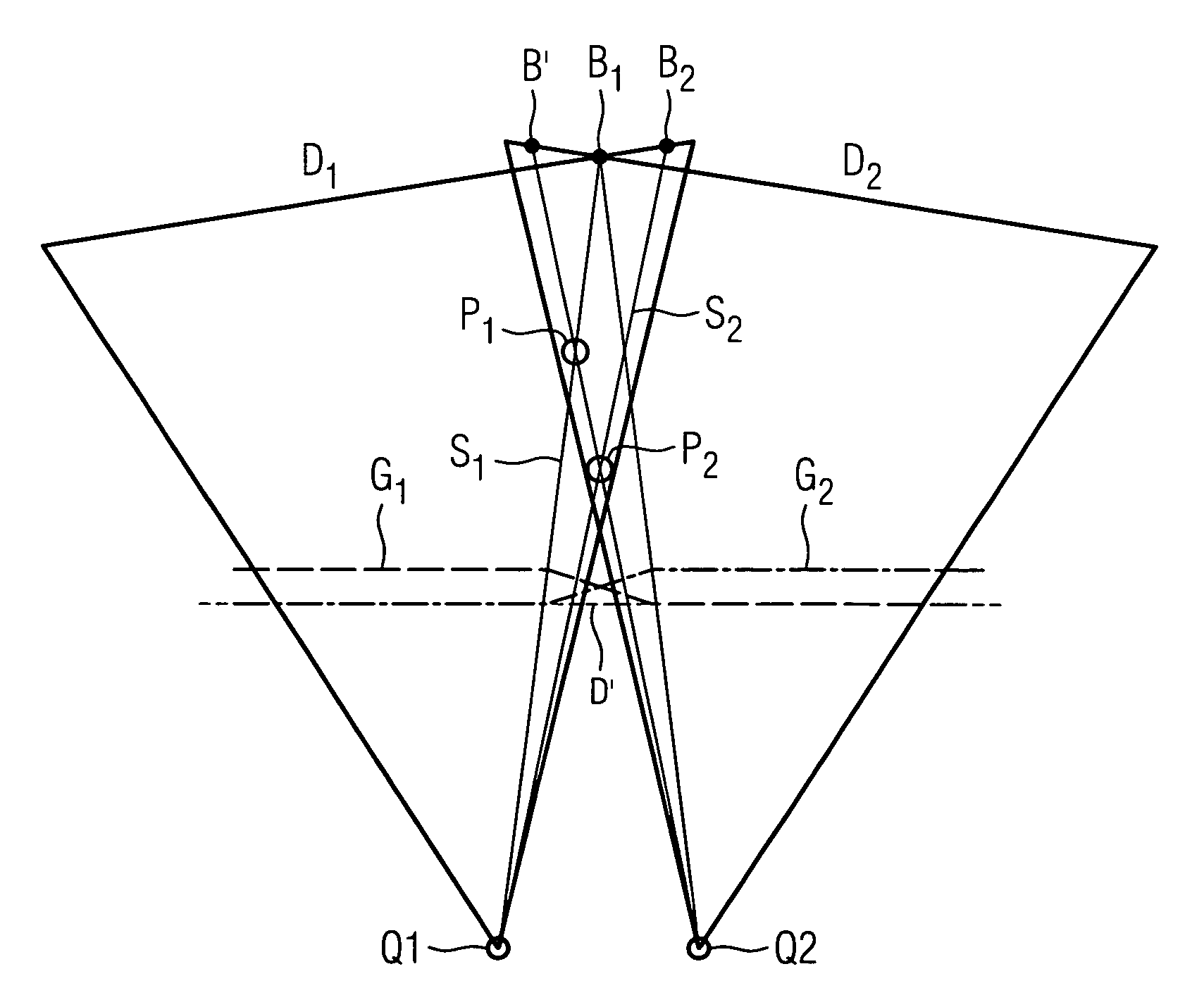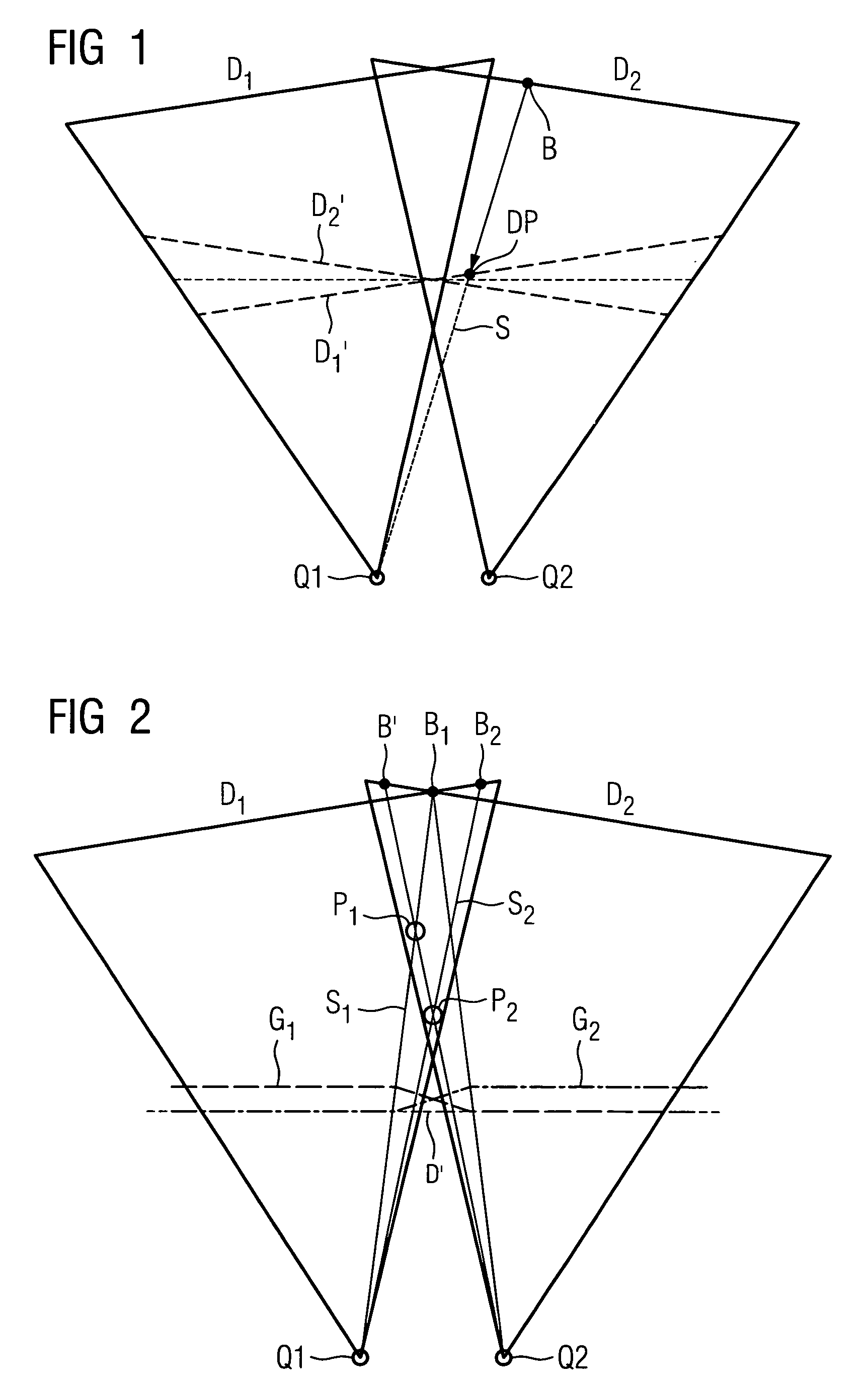Method for generating a 3D reconstruction of a body
a 3d reconstruction and body technology, applied in the field of 3d reconstruction of the body, can solve the problems of no longer superimposing projections, only capturing x-ray images,
- Summary
- Abstract
- Description
- Claims
- Application Information
AI Technical Summary
Benefits of technology
Problems solved by technology
Method used
Image
Examples
Embodiment Construction
[0027]A 3D reconstruction of a body is generated by capturing a sequence of digital X-ray images. Two such digital X-ray projections are generated with a C-arm X-ray unit in a predefined position. The elements of the assembly comprising X-ray source and X-ray detector on the C-arm are rotated relative to each other, with the C-arm X-ray unit in a predefined position, between the capture of the first projection of the pair of projections and the second projection of the pair of projections. It is envisaged that the X-ray source remains in the same position. In practice the X-ray source tends to change position at least slightly. In FIG. 1 the position of the X-ray source for the first image is labeled Q1 and the position of the X-ray source for the second image is labeled Q2. The course of the X-ray detector for the first projection is labeled D1 and the course of the X-ray detector for the second projection is labeled D2. The geometric course of the X-ray detector may be designated ...
PUM
 Login to View More
Login to View More Abstract
Description
Claims
Application Information
 Login to View More
Login to View More - R&D
- Intellectual Property
- Life Sciences
- Materials
- Tech Scout
- Unparalleled Data Quality
- Higher Quality Content
- 60% Fewer Hallucinations
Browse by: Latest US Patents, China's latest patents, Technical Efficacy Thesaurus, Application Domain, Technology Topic, Popular Technical Reports.
© 2025 PatSnap. All rights reserved.Legal|Privacy policy|Modern Slavery Act Transparency Statement|Sitemap|About US| Contact US: help@patsnap.com


